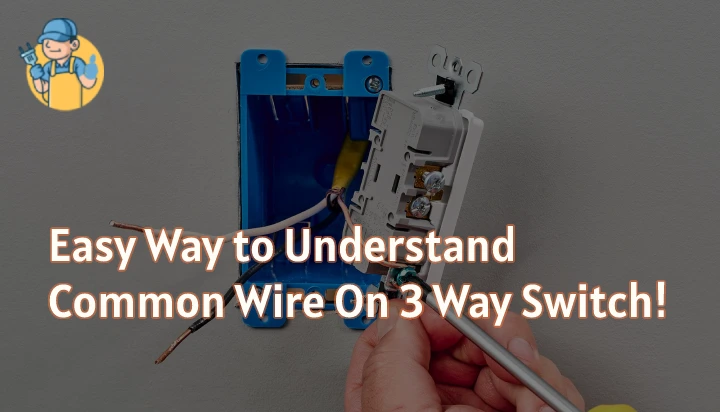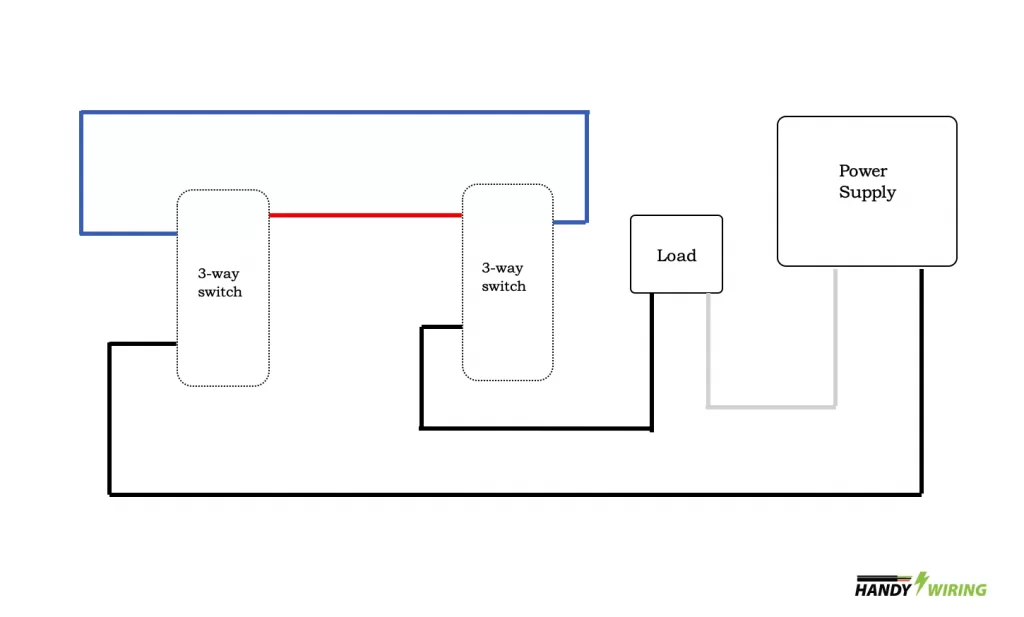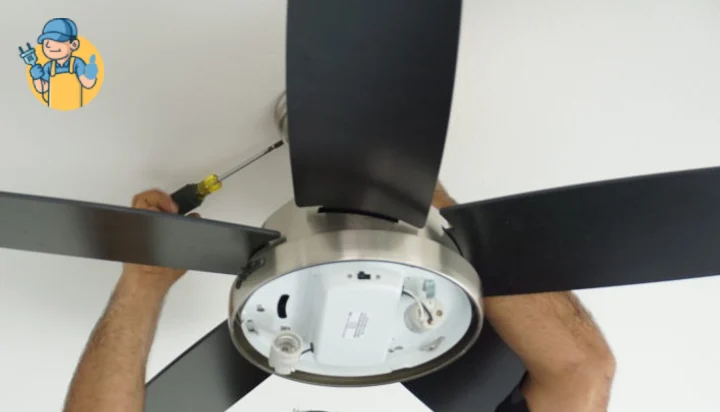An electrical 3-way switch is one of the most convenient devices used to control a light from two distinct locations. If you are an amateur electrician, it is important to know how to locate the common wire on a 3-way switch.
The common wire is the wire that connects both 3-way switches. It serves as the control wire that allows electricity to flow from one switch to the other. It is usually black in color and stands out from the other wires.
With this article, you will be able to learn about the different techniques for finding the common wire. It will also discuss the necessary safety precautions that you need to take before beginning your project.

How Do I Find the Common Wire on A 3-Way Switch?
If you look at any three-way switch, you won’t find any “On” or “Off” markings. This is because the toggle may turn on or off the light in both directions depending on the state of the other switch’s toggle.
A more detailed description you’ll get to identify a 3-way switch is if you look at the switch itself and count the number of terminals it comes with. A 3-way switch has three screw terminals with a ground screw.
While the two terminals are light in color (usually copper-colored) known as the Travelers, the dark-colored screw is called the common terminal. On the other hand, the ground screw terminal is always colored green.
However, the chronology of these screw terminals differs based on different manufacturers. If you buy two switches from two manufacturers, chances are their screw arrangement is different.
You’ll see that on some switches, both the traveler screws are placed on the same side of the body while the common screw is located on the other side.
Again, on some switches, the traveler screws are placed on opposite sides of the switch body while the common screw terminal is located on the opposite end of the body.

How Can I Test for the Common Wire Using a Multimeter?
Testing for the common wire using a multimeter is a simple process that can help you determine the function of each wire in a circuit. Here’s how to test for the common wire using a multimeter:
Gather Necessary Equipment:
Before you begin, you need to gather a few pieces of equipment to successfully proceed with the task.
- Multimeter
- Screwdriver
- Wire stripper
- Electrical tape
Testing for the Common Wire with a Multimeter:
- Turn off the power to the circuit that you are working on. This is important for your safety as well as to prevent any damage to the switches or wires.
- Locate the two 3 way switches that you will be working on. The switches should be located in different rooms or locations that are connected by the common wire.
- Remove the covers from both switches using a screwdriver. You should see a number of wires coming out of each switch.
- Identify the wires that are connected to each switch. You should see a common wire (usually black or red), a traveler wire (usually red or white), and a ground wire (usually green or bare).
- Set your multimeter to the continuity setting. This will allow you to test whether there is a connection between two wires.
- Touch one probe of the multimeter to the common wire of one switch and the other probe to the common wire of the other switch. If the multimeter beeps or shows a reading, this means that the common wire is connected between both switches.
- If the multimeter does not beep or show a reading, this means that the common wire is not connected between both switches. In this case, you will need to trace the wires and check for any loose connections or damaged wires.
- Once you have confirmed the common wire, you can reattach the covers to both switches and turn the power back on to the circuit.
Testing for the common wire when wiring a 3-way switch using a multimeter is a simple and effective way to identify the function of each wire in a circuit.
It is an important skill to have when working with electrical wiring or troubleshooting electrical issues in your home or car.
Alternative Methods for Controlling A 3-Way Switch Circuit
There are several alternative methods for controlling a 3-way switch circuit, which can be used in conjunction with or as a replacement for traditional mechanical switches.
These methods allow you to control your 3-way switch circuit remotely, using your smartphone or a smart home hub, or using voice commands through a smart speaker.
Smart switches:
Smart switches are wireless devices that can be installed in place of traditional mechanical switches. They can be controlled using a smartphone app or a smart home hub, and they can also be voice-activated through a smart speaker.
Smart plugs:
Smart plugs are small devices that can be plugged into an outlet and controlled using a smartphone app or a smart home hub. They can be used to control any device that is plugged into them, including 3-way switches.
Smart home hub:
A smart home hub is a central device that allows you to control all of your smart home devices, including 3-way switches, using a single app or voice commands.
Smart speaker:
Smart speakers, such as Amazon Echo or Google Home, can be used to control your 3-way switch circuit using voice commands.
Simply say the command to turn the lights on or off, and the smart speaker will send the command to the appropriate devices.
While these alternative methods can offer convenience and flexibility, it is important to note that they may require additional installation and setup, as well as a reliable internet connection.
Additionally, they may not be compatible with all types of 3-way switch circuits, so it is important to do your research before choosing an alternative method.
Summary
By following the steps provided in this article, you will be able to find the common wire on a 3-way switch quickly and safely. It is important to remember that you should always exercise caution while handling electrical wires.
Make sure to wear protective gear and keep all tools away from any source of electricity. With this knowledge, you will be able to successfully install your 3-way switch and save yourself from any potential electrical hazards.

![How To Wire A 4 Way Switch? [Complete Guide]](https://wiringsolver.com/wp-content/uploads/2022/07/How-To-Wire-A-4-Way-Switch-768x432.jpeg)


![Guide to Getting Power from an Outlet to a Switch! [Complete Guide]](https://wiringsolver.com/wp-content/uploads/2022/09/Getting-Power-from-an-Outlet-to-a-Switch.jpg)
![Double Light Switch Not Working!! [Solved]](https://wiringsolver.com/wp-content/uploads/2022/08/Fix-Double-Light-Switch-Not-Working.jpeg)
